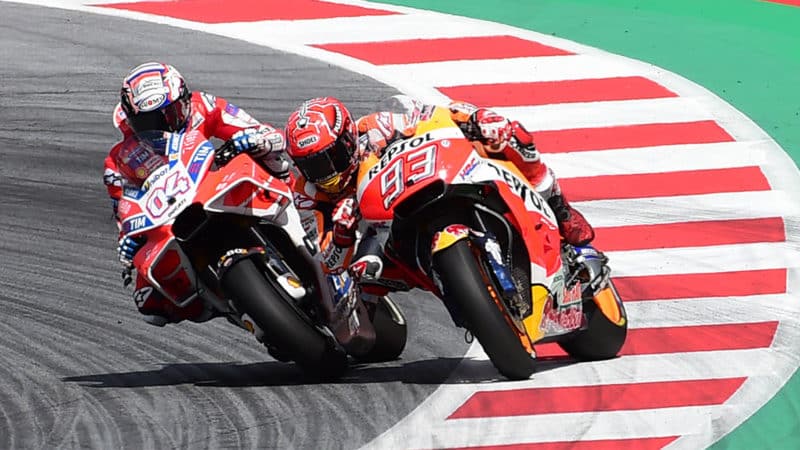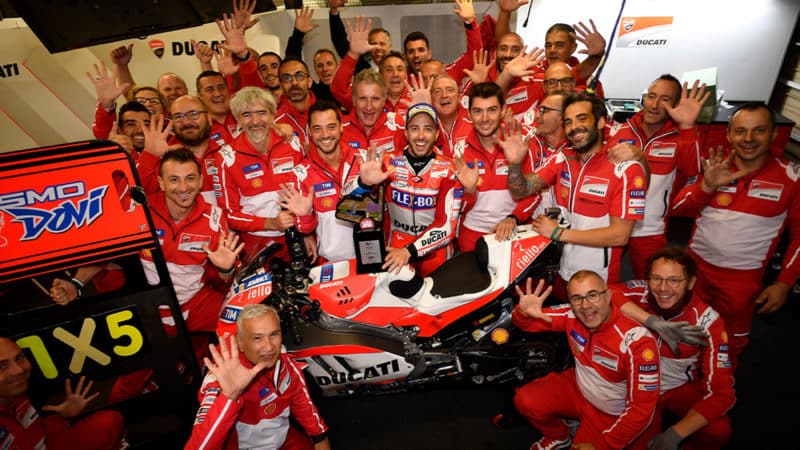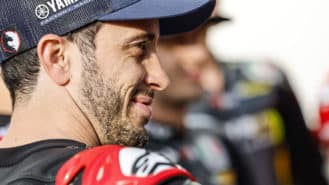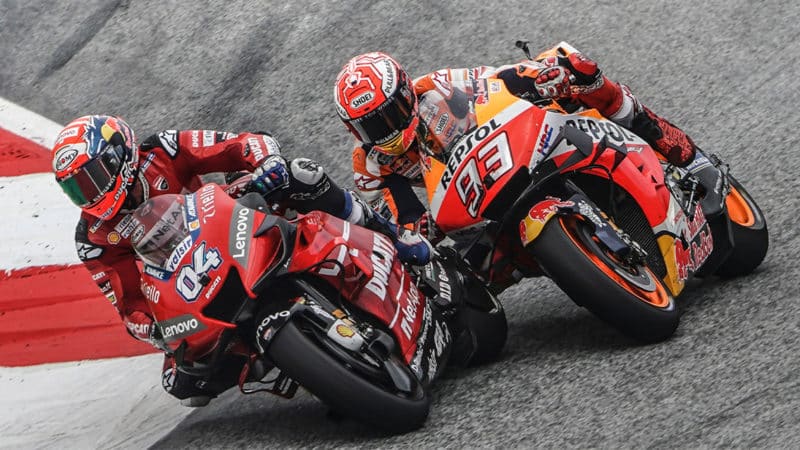Lorenzo led into the final hairpin, where Márquez divebombed him, just like Valentino Rossi on Sete Gibernau in 2005 and Mick Doohan on Alex Crivillé in 1996.
Lorenzo’s reaction to Márquez charging up the inside was the normal reaction: he turned into the corner, hoping to close down the youngster. Instead the pair collided, just like Rossi and Gibernau. Inevitably in these circumstances the rider on the inside comes out best, while the rider on the outside gets pushed out wide.
Dovizioso had a better plan. Each of his five final-turn defeats of Márquez were based upon what he learned during his three years in the 250 class from 2004 to 2007, when he rode a Honda RS250RW
“Because of that bike and the way we worked during that time I became a very late, hard braker,” says the 36-year-old. “The bike gave me the possibility to do that, so from that I really learned to manage the brakes and from that came my riding style.”
In 2013 Dovizioso joined Ducati, riding the not-so-great Desmosedici, which even then had great braking stability, so he became one of the latest brakers in MotoGP. That, plus the strategy and situations he created allow him to do what no one else could really do: beat Márquez in a final-corner showdown.
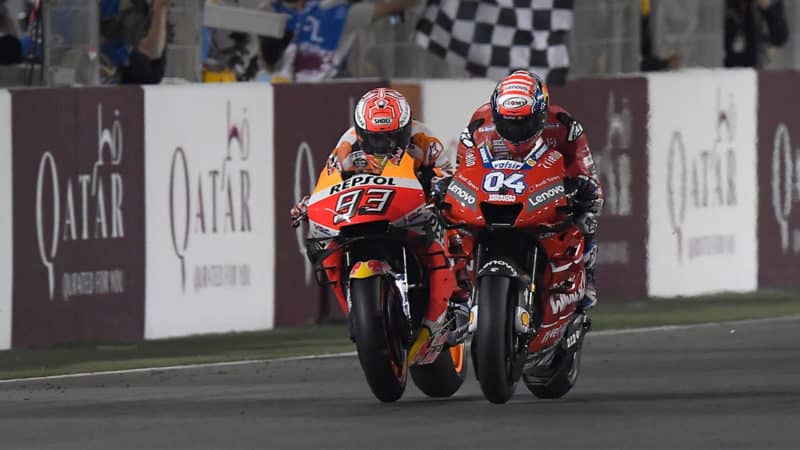
Dovizioso wins the 2019 Qatar GP by 0.023sec, thanks to another final-corner cut-back move on Márquez
Ducati
“Marc and I are opposite in a lot of ways and I think in a completely different way to him and that’s the reason I was able to beat him more than once,” he adds. “I understood him and I knew what he could do, so I tried to create situations, thinking about how he would react to those situations. That was the only way to beat him and it worked.”
Each of the four occasions Dovizioso beat Márquez with the cutback were identical. Dovizioso led into the last corner and Márquez attacked on the inside. Unlike Lorenzo, Dovizioso didn’t try to close him down but instead let him through, because he knew what would happen next. In other words, he suckered him into defeat.
